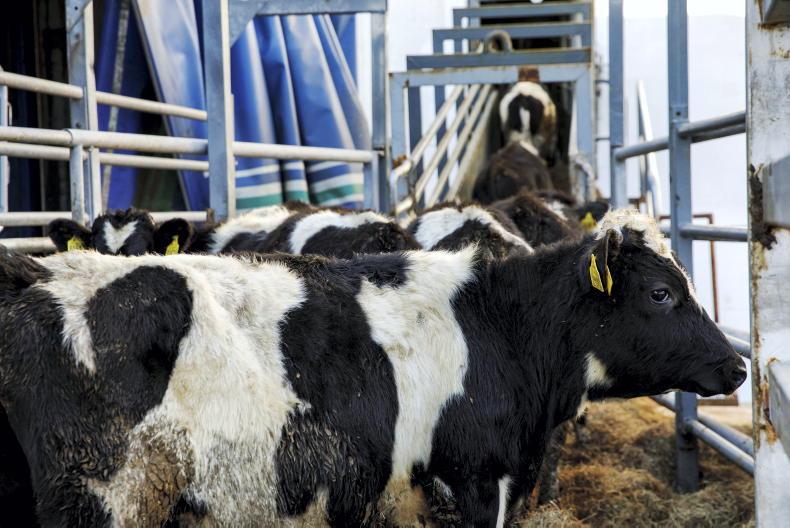The latest animal identification and movement data published by the Department of Agriculture for 1 January 2024 shows contrasting trends in cattle numbers.
The standout figures in terms of cattle numbers is over 50,000 fewer cattle aged six to 18 months of age on farms compared with 1 January 2023.
As detailed in Figure 1, this is driven by almost 60,000 fewer dairy males aged six to 12 months on farms on 1 January.
This has been driven by a combination of higher numbers of calves exported live in 2023 and greater use of sexed semen or beef genetics in breeding programmes.
This is also underpinning the increase of over 20,000 more beef-sired cattle aged six to 12 months, with the decline in suckler births continuing at a worrying pace.
The lower number of young cattle is in contrast to cattle aged in excess of 24 months of age.
There was 21,728 more beef cattle, including dairy males, on farms aged from 30 to 36 months on farms on 1 January and 13,886 more beef cattle in the 24 to 30 month age category.
Contrasting cow numbers
The number of beef suckler cows on farms was running just shy of 42,000 head lower on 1 January, with the total number of cows falling below the 800,000 head mark, as detailed in Table 1.
There were reductions across all age categories, with significant decreases in the 30 to 48 month age bracket, especially concerning as it highlights fewer replacements being incorporated into herds.
The increase in dairy cow numbers has steadied after several years of growth in the national dairy herd. Total numbers were 2,218 head lower compared with 1 January 2023. The reduction in numbers was likely influenced by farmers drying off cows earlier in response to tighter margins and moving cull cows off farms at an earlier stage.
This is reflected in Table 2, which shows a positive figure of 16,823 more young dairy cows aged 30 to 36 months on farms and fewer aged cows.






 This is a subscriber-only article
This is a subscriber-only article











SHARING OPTIONS: